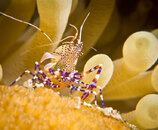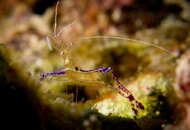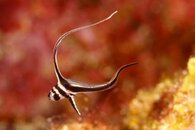Hi,
Now i have a g11+canon housing+2*ys-01+inon ucl165/deeproof steel mounting.
I think about stepping further to have wide angle also, but it is a hard decision for me.
- if i buy s95+wet lenses i will spend a lot to have wide angle, and i don't know what will be about macro (better or worse)
( with my g11 + inon ucl165 i found very difficult to make supermacro, sometimes only 1 shot is sharp from 5 pics. I use spot focus, I adjust the place of focus point if needed, but often when everything seems to be ok, because of the small working distance, the subject goes away, or changes position...)
- in micro 4/3 there is good macro lens, but i did not found a good wide angle zoom
- if i buy dslr i will spend twice as much, will have a 2*heavier, and bigger stuff, and should always decide before diving: macro or WA
(i think about the cheapest: t3i+sea&sea rdx600d+tokina 10-17+60mm macro+maybe later a 100mm macro)
I think i can accept the higher price+weight+size but only if the new stuff is significantly better. For wide angle I can imagine that the t3i+tokina makes better/sharper images than the s95 + inon WA, but I don't know how macro goes on dslr.
Compairing to my stuff, what are the main differences with 60mm and 100mm with
- working distance
- depth of field (I know, dslr goes above f/8 = more DOF)
- autofocus speed
- ease of use
...
Thanks for advance


Now i have a g11+canon housing+2*ys-01+inon ucl165/deeproof steel mounting.
I think about stepping further to have wide angle also, but it is a hard decision for me.
- if i buy s95+wet lenses i will spend a lot to have wide angle, and i don't know what will be about macro (better or worse)
( with my g11 + inon ucl165 i found very difficult to make supermacro, sometimes only 1 shot is sharp from 5 pics. I use spot focus, I adjust the place of focus point if needed, but often when everything seems to be ok, because of the small working distance, the subject goes away, or changes position...)
- in micro 4/3 there is good macro lens, but i did not found a good wide angle zoom
- if i buy dslr i will spend twice as much, will have a 2*heavier, and bigger stuff, and should always decide before diving: macro or WA
(i think about the cheapest: t3i+sea&sea rdx600d+tokina 10-17+60mm macro+maybe later a 100mm macro)
I think i can accept the higher price+weight+size but only if the new stuff is significantly better. For wide angle I can imagine that the t3i+tokina makes better/sharper images than the s95 + inon WA, but I don't know how macro goes on dslr.
Compairing to my stuff, what are the main differences with 60mm and 100mm with
- working distance
- depth of field (I know, dslr goes above f/8 = more DOF)
- autofocus speed
- ease of use
...
Thanks for advance








